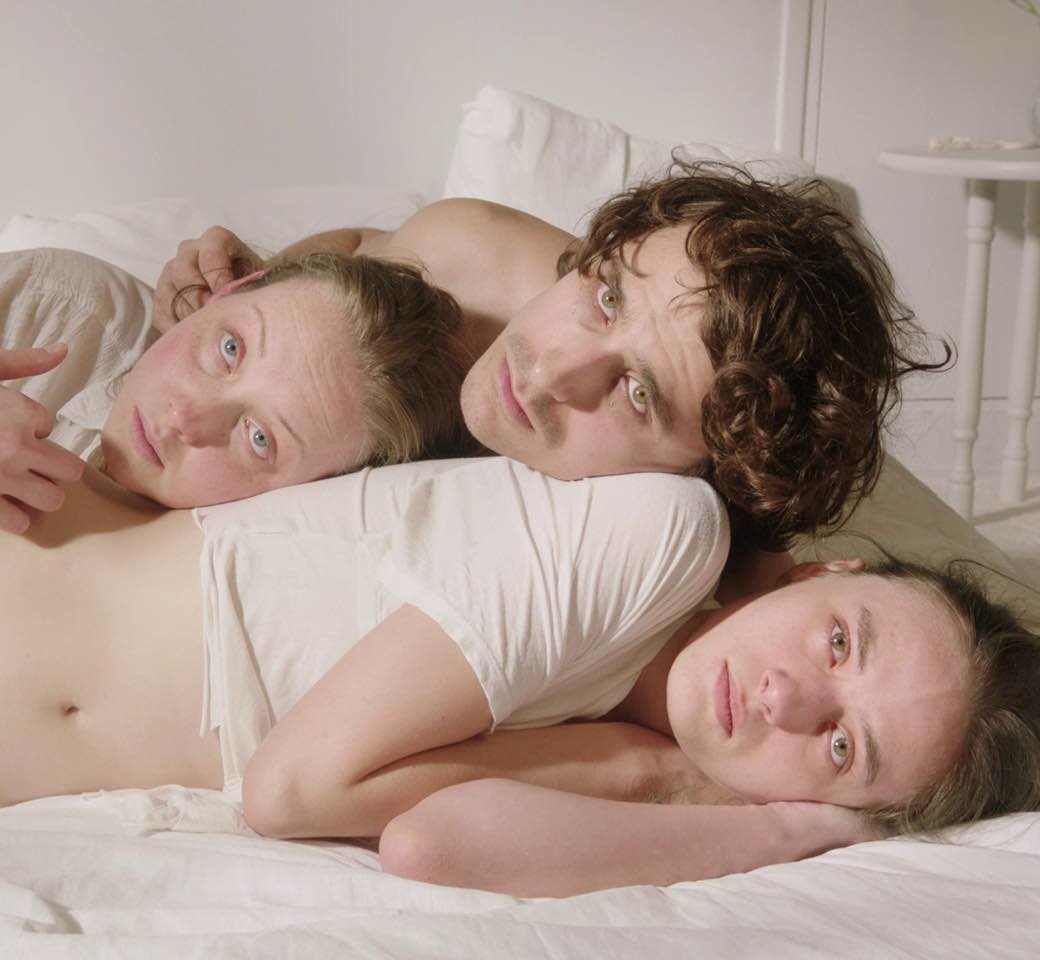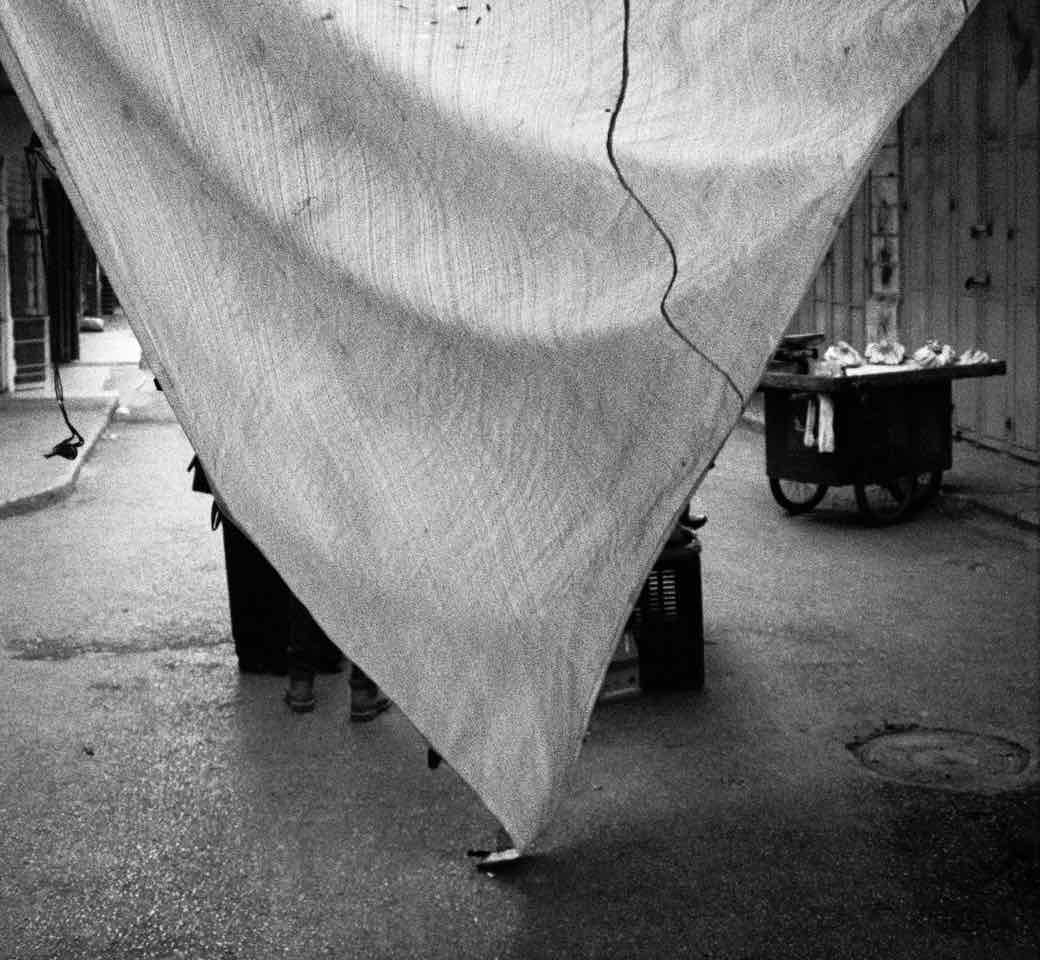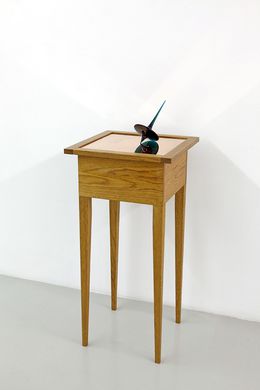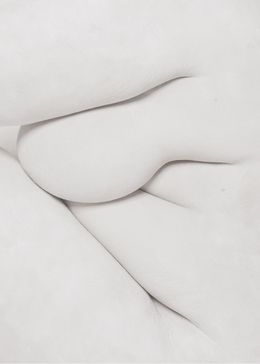
Meet Mathilde Dalmas & Paul Neltner
Coordinators of the Dauphine Prize for Contemporary Art

Contestants of the Dauphine Prize for Contemporary Art 2022, from left to right: Léa de Cacqueray, Romy Hammond, Gaëtan Soerensen, Cha Toublanc, Sergi Alvarez Riosalido, Nathan Ghali, Alexandre Zhu, Valentin Ranger, Faustine Pallez Beauchamp, Lévana Schütz. Missing: Adèle Delefosse, Elora Weill-Engerer © Paul Neltner
Mathilde Dalmas and Paul Neltner are art history experts who are driven by the desire to support young artists. Their ambition led them to coordinate the Dauphine Prize for Contemporary Art, a constantly growing student project. This event contributes to the valorization of the role of the curator, and helps its contestants gain more visibility. Artsper, as an official partner, went to meet these two young professionals for whom the art market holds no secrets!
1. Hello Mathilde and Paul! How would you describe the DNA of the Dauphine Prize for Contemporary Art? Who are the young students and professionals who organize it?
Hello! The Dauphine Prize for Contemporary Art is a student initiative, founded in 2014 by students of the Master's degree in Management of Cultural Organizations at the University of Paris Dauphine-PSL. Each year, the classes pass the baton with the objective of perpetuating the initiative and developing it. Our values are to promote and support young contemporary creation. Through the organization of an annual exhibition, we seek to feature young creators, insisting on the complementarity between curatorial practices and artistic work. Each year, a contest, intended for pairs of artists and curators under 30 years old, is published along with a defined theme. We also gather a jury composed of professionals of the contemporary art world, which selects the pairs participating in the exhibition. For this ninth edition, we were lucky enough to be accompanied by Colette Barbier (director of the Pernod Ricard foundation), Anne-Sarah Benichou (gallery owner), Aïda Bruyère (winning artist of the Dauphine 2021 Prize), Rebecca Lamarche-Vadel (director of the Lafayette Anticipations foundation), Olivier Kaeppelin (art critic and curator) and Thibaut Wychowanok (deputy editor of Numéro Magazine). At the end of this exhibition, which will be held from June 9 to 26 at Le Sample in Bagnolet, we will award a jury prize (2000 euros) and a public prize (1000 euros). Thus, our goal is to organize a beautiful group exhibition and to have a positive impact on the career of these young creators.
2. Can you tell us more about your background and the steps that led you to the general coordination of the art prize?
MD: My background as an art historian has greatly influenced my view and understanding of the processes of artistic creation and research. I was lucky enough to learn about the economics of museum exhibitions and how they work during an internship in 2019-2020 at the Orsay and Orangerie museums. After these experiences, I wanted to put this newly acquired knowledge to good use as well as complete it. That is why I joined the general curatorship of the second International Biennial of Young Creation, in Saint-Paul de Vence. This initiative taught me a lot about the need to promote the work and talent of young artists. All these steps led me to the Dauphine Prize, for which I wished to contribute by bringing all my passion and my knowledge, in order to ensure its general coordination alongside Paul.
PN: Personally, I decided to work in contemporary art in 2019, when I met the gallery owner Anne-Sarah Bénichou. After working for two years in a gallery, I joined the master's degree in management of cultural organizations at Dauphine in order to complete my academic training. The Dauphine Prize for Contemporary Art was a great source of motivation to join this master's program. This project is particularly close to my heart because I want to promote young artists in my future professional career. Our ambition with this exhibition is to create an ecosystem, where young professionals work hand in hand and grow together.


On the left: Lévana Schütz, Series “Face à Face – Les voix baillonnées," 2021-2022 glazed earthenware, ceramic, cables, variable dimensions © Lévana Schütz, On the right: Nathan Ghali, “Peut-on se comprendre en parlant," 2021, short film, 14 min 26 sec © Nathan Ghali
3. After the pandemic outbreak - which impact was particularly strong on the cultural sector - what lessons do you draw from the forced slowdown of artistic events?
The cultural sector was directly affected during the pandemic, and we witnessed it as young professionals evolving in this ecosystem. However, as with every crisis revealing the weaknesses of a system, we also observe the emergence of new solutions: many institutions (museums, galleries, fairs) had to think of new ways to raise public awareness and support artists. With this in mind, it seemed logical that the digital revolution would impose itself on actors who were still pessimistic. Many initiatives which emerged during the pandemic will become normalized and will allow new ways of making art more accessible.
However, this observation does not exclude the difficult situation of the artists, and in particular of the young people that we support. Not having had the right to the exceptional funds of support released by the government, they had to improvise to continue their practice while having an income. We hope that this withdrawal, which took place during the pandemic, will act as a breath of fresh air, and allow the actors of contemporary art to take more risks for the artists that they represent. We saw it with the recent resumption of the cultural events; the art is well and truly essential because it is a territory of research and poetry, allowing us to explore the dynamics between people and the world. These are vital in these times of political, economic, ecological and social questioning.
4. The Dauphine Prize is a powerful platform for its candidates, who are coming from the emerging scene. How important is it for you to highlight young creatives?
Young creation is the DNA of the Dauphine Prize. Working with artists from the same generations as us allows a dialogue that shows a common desire to learn, imagine and grow together. The essence of our mission is to organize a great exhibition in order to showcase the work of the duos. We do our best to talk about their work in the press, with our partners and with the public.
Cultural mediation was central to the conception of this exhibition: we wish to make the works accessible to as many people as possible. The role of the curators is crucial in this perspective. This is also why we have imagined a whole program around the exhibition, allowing everyone to enjoy it via different projects.
5. The particularity of the Dauphine Prize lies in its collaborative format: the contestants are artist/curator pairs, which is quite rare. Often, the role of the curator is relegated to the background, because it is not widely publicized. Where does this desire to promote it come from?
We believe that the curator's work is as creative and poetic as the artist's work. Indeed, who, if not the curator, thinks of the encounter between the viewer and the work?
Whether through the words of curators in exhibition catalogs or the writings of critics, the process of writing about a work is an essential part of the accessibility of contemporary art. This is why we pay particular attention to the formalization of this specific relationship between the artist and the curator.


On the left: Léa de Cacqueray, “Reliquae," 2021, metal, engine, LEDs, aluminium, pince, 35 x 35 x 65 cm © Léa de Cacqueray, On the right: Gaëtan Soerensen, “Waqf," 2017-2019, Amman (Jordan) - Nablus (Palestine) (7), b&w film photograph © Gaëtan Soerensen
6. The artists and curators selected for this ninth edition have unique backgrounds, strewn with encounters. Do you think that collaboration is essential in the art world?
We have different scenarios for this edition. Some pairs had already worked together, others knew each other without ever having worked on a joint project and others met for the first time for this collaboration. Through the interviews we conducted for the exhibition catalog, we felt that this collaborative format brought real consistency to the projects presented.
Collaboration is not only essential in the art world, it is essential for anyone who wants to create a project. These experiences in pairs are very enriching for the artists because they generate a dialogue that accompanies the artistic act, a new prism of interpretation thanks to the texts and the curator's mediation. This is part of the selection criteria of the pairs when applying for the competition.
7. For its 2022 edition, the Dauphine Prize is based on Beckett's phrase "In silence one does not know." Why did you choose this theme?
The fourteen members of the group have joined forces to choose this theme. The great richness of our academic program is to allow very different profiles - coming from literature, theater, contemporary art or music - to constitute a class. This offers a wide variety of opinions regarding the choice of the theme.
For example, this excerpt from Samuel Beckett's "The Unspeakable" was an obvious choice given the current state of our society. The violent ecological, social and sanitary crises experienced since 2020 echo what Beckett said, at a time when artistic creation was the only response to the absurdity and horrors of the Second World War. Seventy years later, words and images are saturated by the media and social networks. It became apparent to us that the whole stake of contemporary creation lays on the need to rediscover meaning, to question and overcome tragedies, and to continue doing so whatever the cost.
8. Finally, among the recurring themes in the works of the selected pairs, we find the virtual world, the complex relationship between man and machine, and the difficulty, even the impossibility, of communicating. In the age of digital transformation, how do you see the future of the art market?
The art market has changed a lot since the 1990s, and has never been so international, stratified and opaque. Digital technology has contributed to these changes, with the prominence of media and social networks, sometimes at the expense of artists. This situation is also leading to a weakening of the critic's role. More recently, the boom of online sales platforms and the rise of NFTs are reshuffling the cards on the very structure of the market. Although it is still too early to draw conclusions, one can guess that the art gallery model à la Durand-Ruel, Kahnweiler and Léo Castelli, will undergo a new paradigm, linked to digital technology. In our opinion, digital technology compensates for the shortcomings of the traditional market, namely the need for transparency, accessibility to the public, and the possibility of large-scale collaborative projects. On the other hand, digital art raises the question of the physical experience of art, of the governance of algorithms as the key to visibility, and it can also have serious ecological consequences. It is therefore an undeniable and promising tool for the future of the art market, but one that should serve to correct the current shortcomings of the market rather than to add barriers for young artists.
Their favorite artworks








Pauline Di Valentin
Fine Art Drawings - 70 x 100 x 0.01 cm Fine Art Drawings - 27.6 x 39.4 x 0 inch
€2,000






